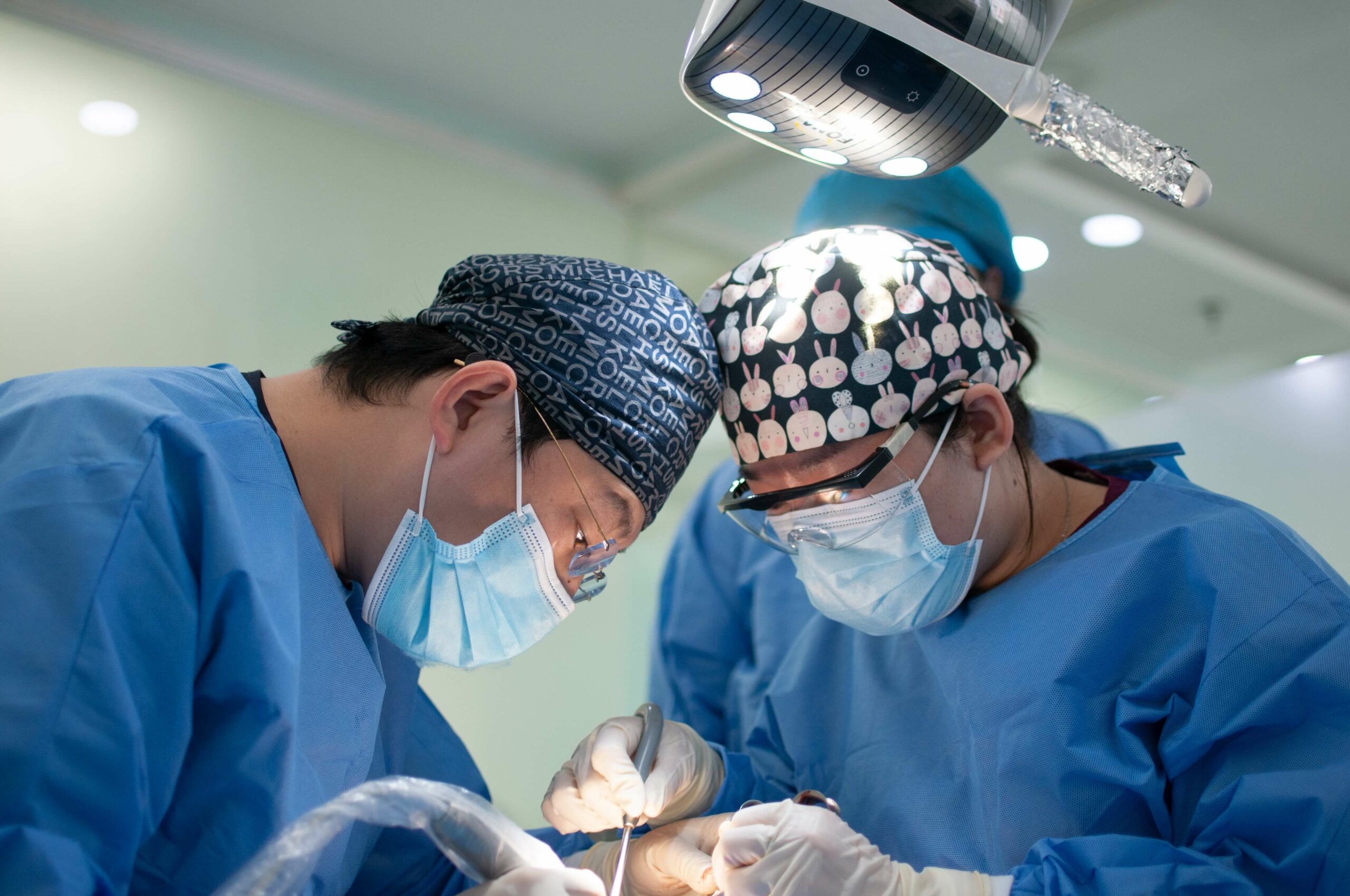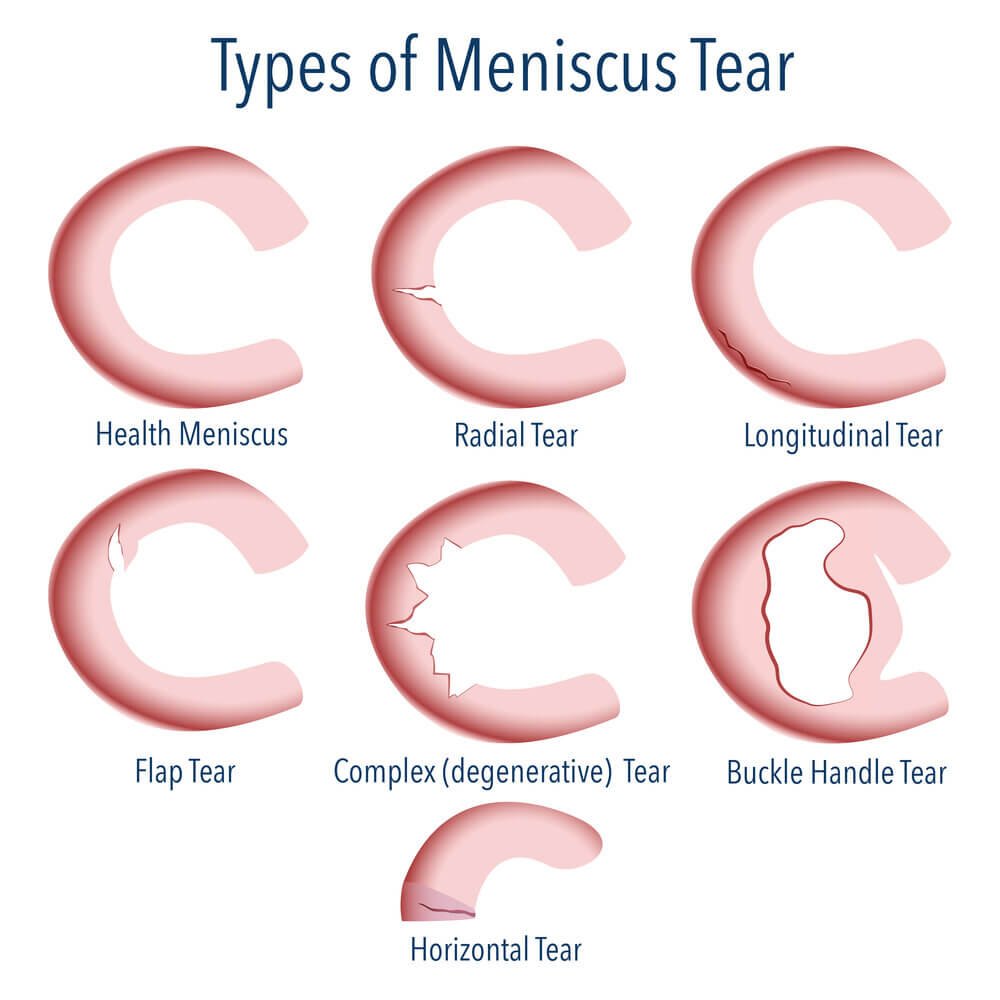Understanding Meniscus Tears

The meniscus is a C-shaped piece of cartilage that acts as a shock absorber between your thighbone (femur) and shinbone (tibia) in your knee joint. It helps distribute weight evenly, providing stability and cushioning during movement. A meniscus tear occurs when this cartilage is torn, often due to a sudden twisting or impact.
Anatomy and Function of the Meniscus
The meniscus is composed of two parts: the medial meniscus (inner side) and the lateral meniscus (outer side). It is a crucial component of the knee joint, contributing to several vital functions.
- Shock Absorption: The meniscus acts as a cushion, absorbing impact forces during activities like jumping, running, and walking. This helps to protect the delicate joint surfaces from wear and tear.
- Stability: The meniscus helps to stabilize the knee joint by providing a snug fit between the femur and tibia. It guides the smooth movement of the knee, preventing excessive motion.
- Lubrication: The meniscus helps to distribute synovial fluid, a lubricating substance that reduces friction between the joint surfaces. This smooth movement allows for effortless knee articulation.
Types of Meniscus Tears
Meniscus tears can be classified based on their location, shape, and severity.
- Horizontal Tear: This tear runs across the width of the meniscus.
- Vertical Tear: This tear runs along the length of the meniscus, and can be further categorized as radial or longitudinal.
- Bucket-Handle Tear: This is a serious type of tear where a large portion of the meniscus is torn away, resembling a bucket handle.
- Degenerative Tear: This tear occurs due to wear and tear over time, often in individuals over 40.
Causes of Meniscus Tears
Meniscus tears are common injuries, particularly among athletes and individuals involved in physically demanding activities.
- Twisting Injury: A sudden twisting motion of the knee, especially when the foot is planted firmly on the ground, can cause a meniscus tear.
- Direct Impact: A direct blow to the knee, such as a fall or a collision, can also result in a meniscus tear.
- Degeneration: As we age, the meniscus can become thinner and weaker, making it more susceptible to tears.
Symptoms of a Meniscus Tear
The symptoms of a meniscus tear can vary depending on the severity of the tear. Some individuals may experience only mild discomfort, while others may experience significant pain and instability.
- Pain: A sharp, sudden pain in the knee, especially during twisting or bending movements.
- Swelling: Swelling around the knee joint, which may develop gradually or immediately after the injury.
- Stiffness: Difficulty bending or straightening the knee.
- Locking or Catching: A feeling of the knee locking or catching during movement, indicating a large piece of torn meniscus is obstructing the joint.
- Instability: A feeling of the knee giving way or feeling unstable.
Diagnosis of a Meniscus Tear
A thorough physical examination and imaging tests are usually required to diagnose a meniscus tear.
- Physical Examination: The doctor will assess your knee range of motion, stability, and tenderness. Specific tests may be performed to evaluate the integrity of the meniscus.
- Magnetic Resonance Imaging (MRI): This imaging test provides detailed images of the knee joint, allowing the doctor to visualize the meniscus and identify any tears.
Treatment Options for Meniscus Tears: Meniscus Tear Recovery

The journey to healing from a meniscus tear can vary depending on the severity of the tear, the individual’s activity level, and other factors. Treatment options aim to alleviate pain, restore joint function, and prevent further damage.
Conservative Treatment Options
Conservative treatments focus on reducing pain and inflammation and allowing the meniscus to heal naturally. These methods are often the first line of treatment for mild to moderate meniscus tears.
- Rest: Limiting activities that put stress on the affected knee, such as running, jumping, and squatting, can help reduce inflammation and allow the meniscus to heal.
- Ice: Applying ice packs to the injured knee for 15-20 minutes at a time, several times a day, can help reduce swelling and pain.
- Compression: Using a compression bandage can help reduce swelling and provide support to the injured knee.
- Elevation: Keeping the injured leg elevated above the heart can help reduce swelling.
Meniscus tear recovery – Along with RICE, pain medication, such as over-the-counter ibuprofen or naproxen, can help manage pain and inflammation. Physical therapy plays a crucial role in conservative treatment. A physical therapist can teach you exercises to strengthen the muscles surrounding the knee, improve range of motion, and improve stability. Physical therapy can also help you regain functional mobility and return to your desired activities.
Surgical Treatment Options
Surgery is often considered when conservative treatment fails to provide adequate pain relief or when the meniscus tear is severe. Two common surgical procedures are:
- Arthroscopic Surgery: This minimally invasive procedure uses a small camera and surgical instruments inserted through small incisions to repair or remove the torn meniscus. It is often used to remove loose fragments of the meniscus or to repair a tear that is still attached to the knee joint.
- Meniscectomy: This procedure involves removing the damaged portion of the meniscus. It is typically performed for tears that are not repairable or for individuals who are not good candidates for repair surgery.
Comparison of Treatment Options
The choice between conservative and surgical treatment depends on several factors, including the severity of the tear, the individual’s age, activity level, and overall health. Conservative treatment is generally preferred for mild to moderate tears and can be successful in alleviating pain and restoring function. Surgical treatment is often considered for severe tears, tears that do not heal with conservative treatment, or for individuals who need to return to high-impact activities.
Surgical treatment carries some risks, such as infection, blood clots, and damage to surrounding structures. However, advancements in arthroscopic surgery have made the procedure safer and more effective. Rehabilitation after surgery is essential to restore full function and prevent further injury.
Sample Treatment Plan
A sample treatment plan for a patient with a meniscus tear may include:
- Initial Phase: Rest, ice, compression, and elevation (RICE) for 2-3 days to reduce inflammation.
- Physical Therapy: Begin with gentle range-of-motion exercises and gradually progress to strengthening exercises. Physical therapy may also include modalities such as heat, ultrasound, or electrical stimulation.
- Pain Medication: Over-the-counter pain relievers, such as ibuprofen or naproxen, can be used to manage pain and inflammation.
- Gradual Return to Activity: Gradually increase activity level as tolerated, starting with low-impact activities and progressing to higher-impact activities.
The specific treatment plan will vary based on the individual’s needs and the severity of the tear. It is important to work closely with your doctor and physical therapist to develop a plan that is right for you.
Recovery Process After Meniscus Tear Treatment

The journey back to full mobility after a meniscus tear can be a challenging yet rewarding one. The path to recovery is often paved with patience, persistence, and a deep commitment to the rehabilitation process. This section delves into the post-operative recovery process, emphasizing the crucial role of physical therapy and outlining the expected milestones along the way.
Post-Operative Recovery Process
Following surgery, the focus shifts to promoting healing and restoring function. The initial phase involves minimizing swelling and pain, followed by gradually increasing range of motion and strength. The recovery timeline varies based on the severity of the tear, the type of surgery performed, and individual factors such as age and overall health.
Importance of Physical Therapy and Rehabilitation Exercises, Meniscus tear recovery
Physical therapy plays a pivotal role in meniscus tear recovery. A tailored rehabilitation program, designed by a qualified physical therapist, guides the body through a progressive series of exercises. These exercises are crucial for:
- Reducing pain and inflammation
- Restoring range of motion
- Strengthening muscles surrounding the knee
- Improving balance and coordination
- Returning to desired activity levels
Timeline of Expected Recovery Milestones
While recovery timelines can vary, a general roadmap provides a framework for understanding the expected milestones. Here’s a typical progression:
- Weeks 1-2: Focus on reducing pain and swelling. Gentle range of motion exercises are introduced. Use of crutches or a brace may be required.
- Weeks 3-6: Increased range of motion exercises and strengthening exercises are incorporated. Weight-bearing activities are gradually increased as tolerated.
- Weeks 6-12: Emphasis on strengthening and proprioception (body awareness) exercises. Return to functional activities, such as walking, jogging, and light sports, is initiated.
- Months 3-6: Focus on regaining full strength, flexibility, and endurance. Gradual return to more demanding activities, including sports, is possible.
Common Rehabilitation Exercises
Here are some common exercises used in meniscus tear rehabilitation:
- Quadriceps Strengthening: Lie on your back with your leg extended. Tighten your thigh muscle and lift your leg a few inches off the ground. Hold for a few seconds and slowly lower your leg.
- Hamstring Strengthening: Lie on your stomach with your leg extended. Bend your knee and bring your heel towards your buttocks. Hold for a few seconds and slowly lower your leg.
- Calf Strengthening: Stand facing a wall with your feet shoulder-width apart. Lean forward, keeping your back straight, until you feel a stretch in your calves. Hold for a few seconds and slowly return to the starting position.
- Range of Motion Exercises: Gently bend and straighten your knee, moving through its full range of motion. Avoid forcing the knee beyond its comfortable range.
- Balance Exercises: Stand on one leg and hold for as long as you can. Repeat on the other leg. As you progress, you can increase the difficulty by standing on an unstable surface, such as a pillow.
Potential Complications and Risks
While meniscus tear surgery is generally safe, potential complications and risks should be understood. These can include:
| Potential Complications | Description |
|---|---|
| Infection | Bacteria entering the surgical site can cause an infection. |
| Blood Clot Formation (Deep Vein Thrombosis) | Blood clots can form in the legs, potentially leading to a pulmonary embolism. |
| Stiffness | Scar tissue formation can restrict knee movement. |
| Re-tear | The repaired meniscus can tear again. |
| Arthritis | Long-term wear and tear on the knee joint can lead to arthritis. |
Recovering from a meniscus tear can be a long process, with physical therapy playing a key role in regaining strength and mobility. It’s tough to see athletes sidelined by injuries like the one suffered by Justin Jefferson, a serious setback for the Vikings offense.
But with dedication and proper care, meniscus tear recovery can be successful, allowing athletes to return to their sport at their peak performance.
Recovering from a meniscus tear can be a journey, but it’s important to understand what’s going on. A meniscus tear is an injury to the C-shaped cartilage in your knee, which helps cushion and stabilize the joint. If you’re dealing with a meniscus tear, it’s crucial to learn more about the injury itself, and that’s where a resource like this one comes in handy.
By understanding the nature of the injury, you can work with your doctor to create a personalized recovery plan.
